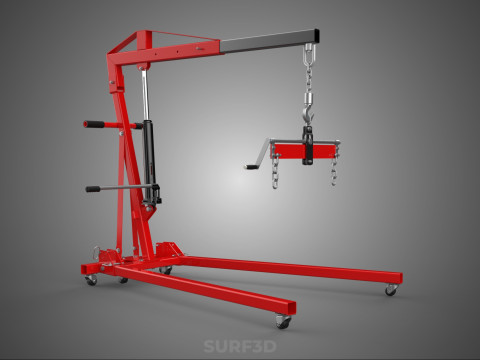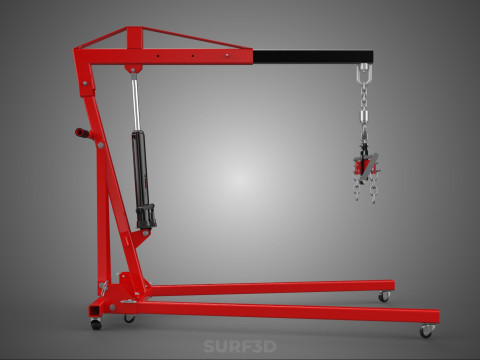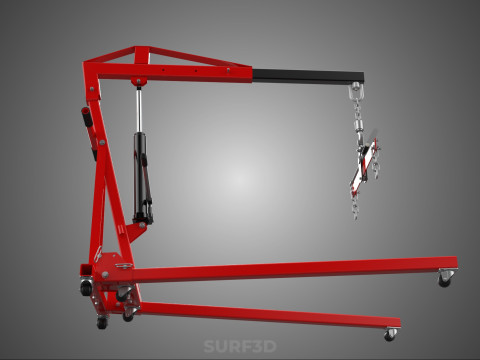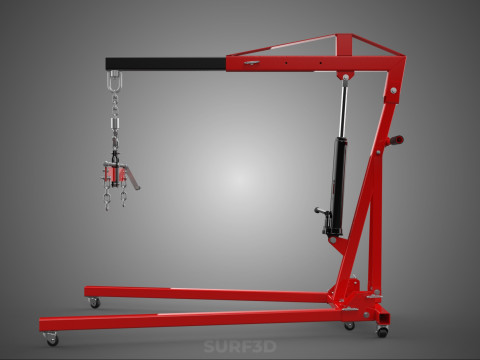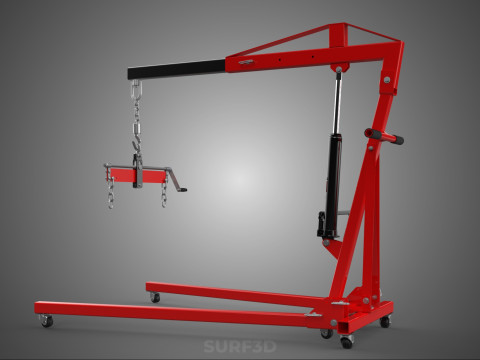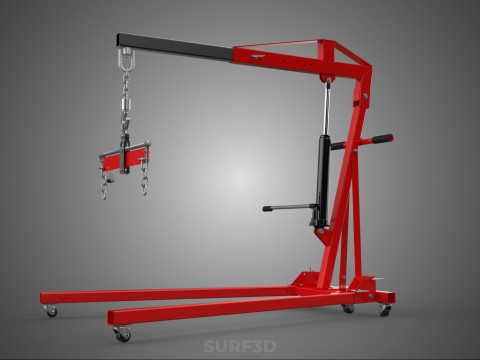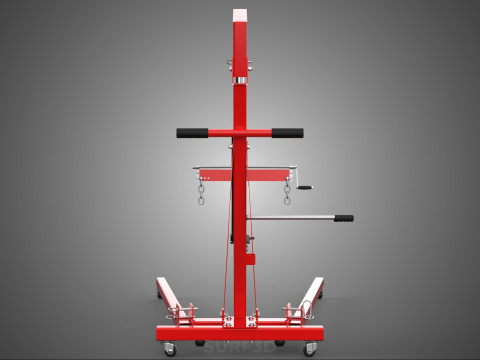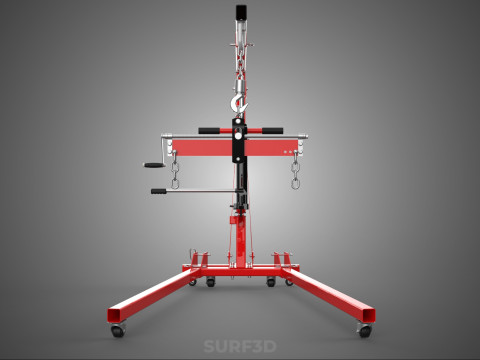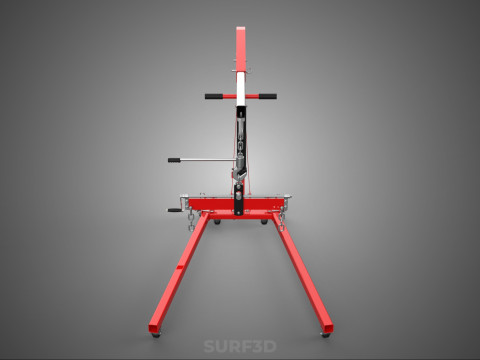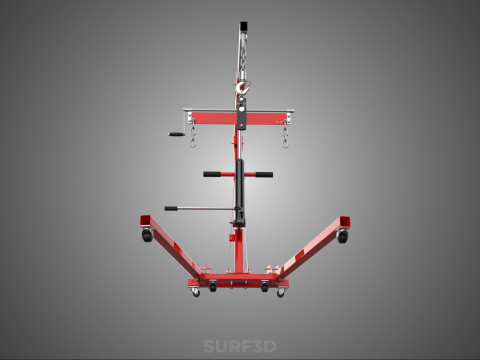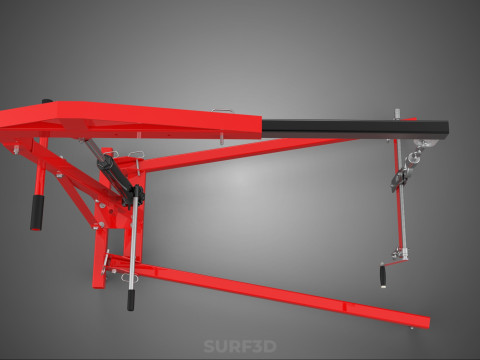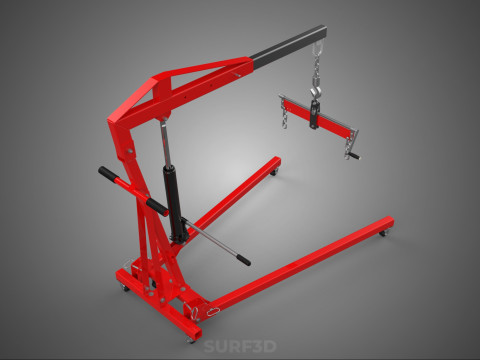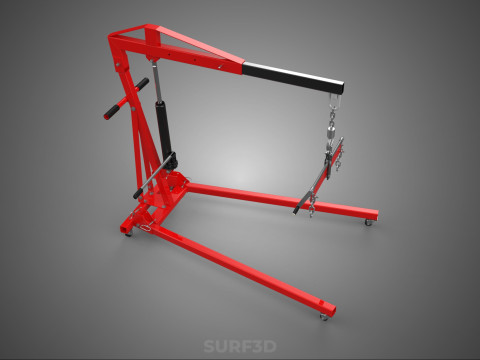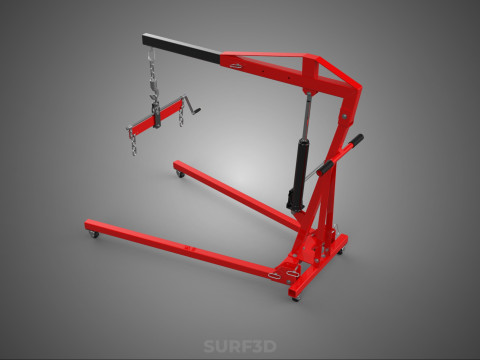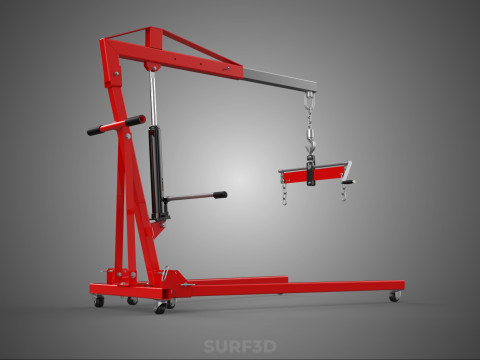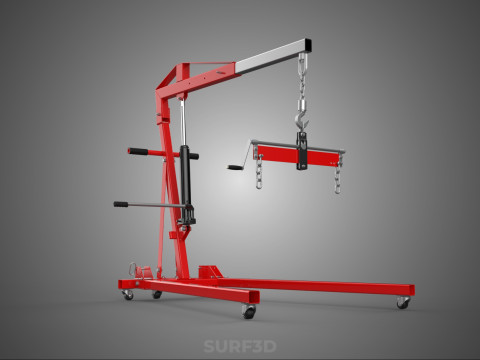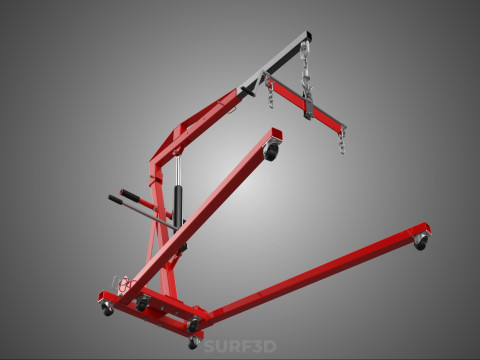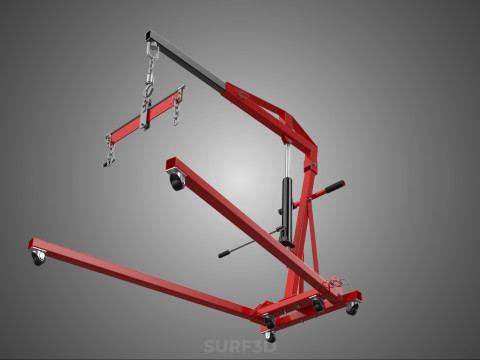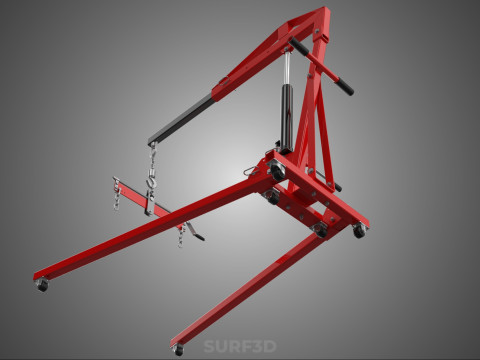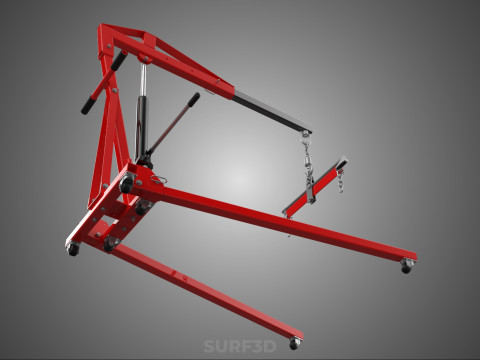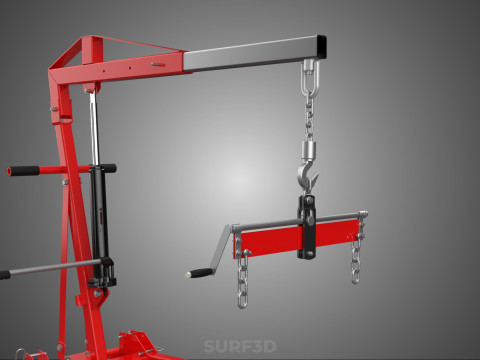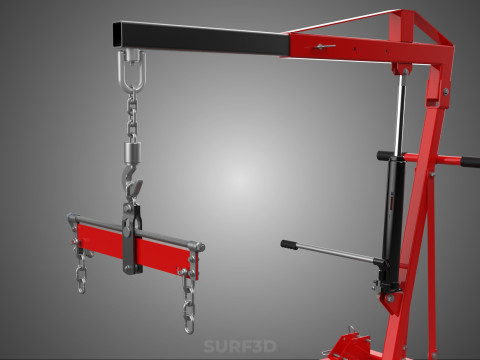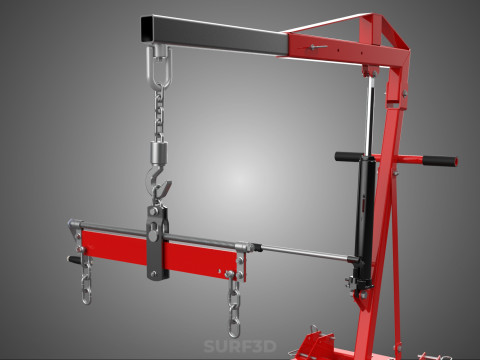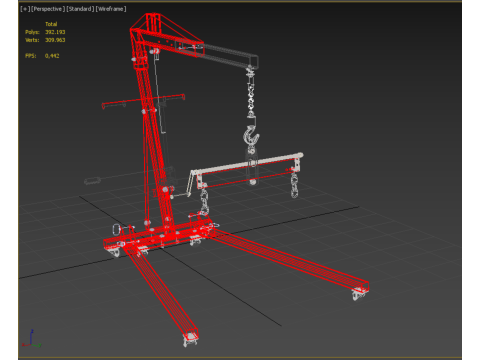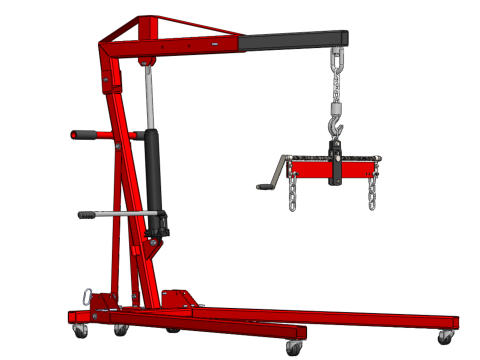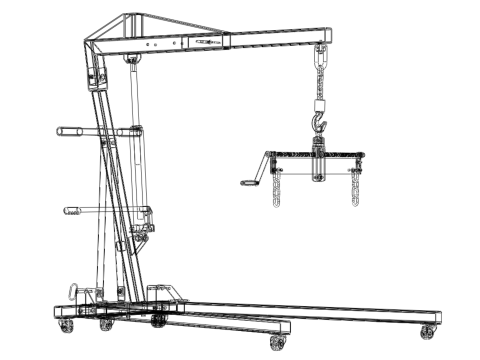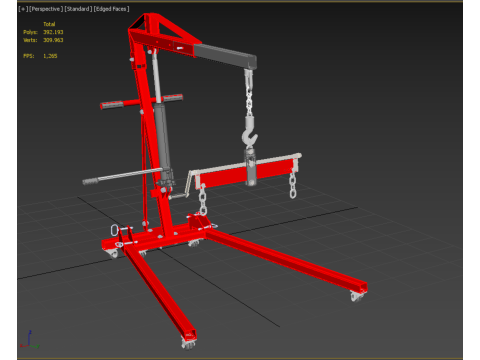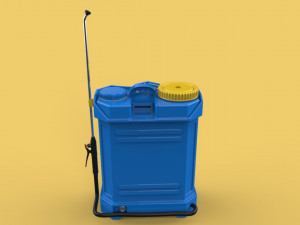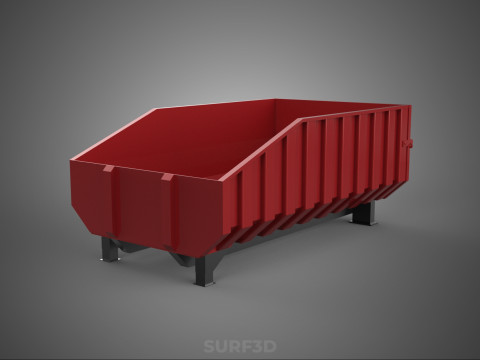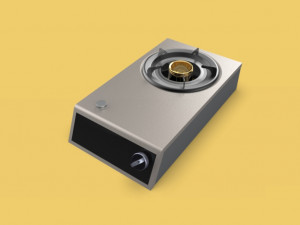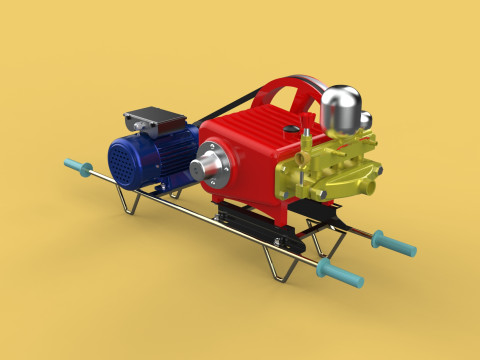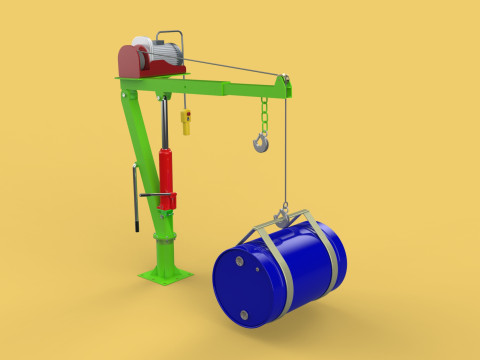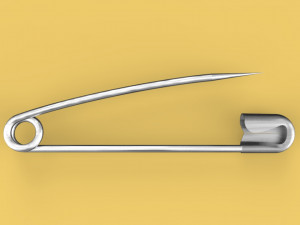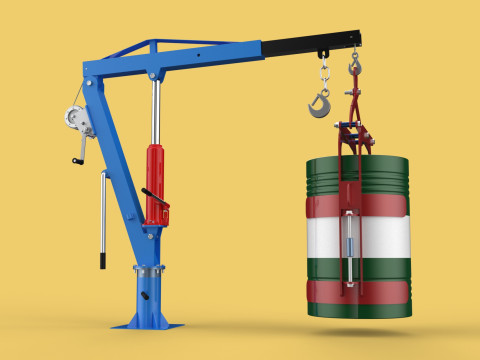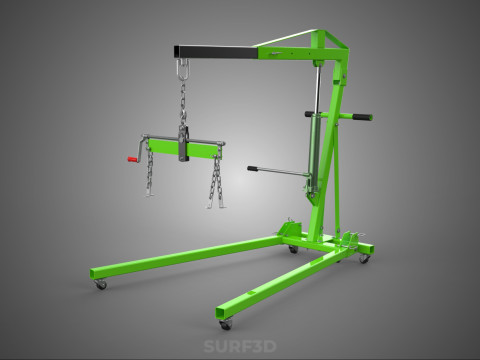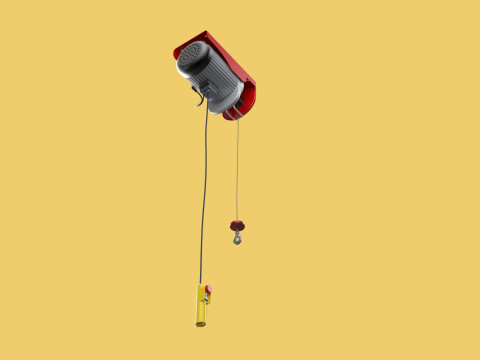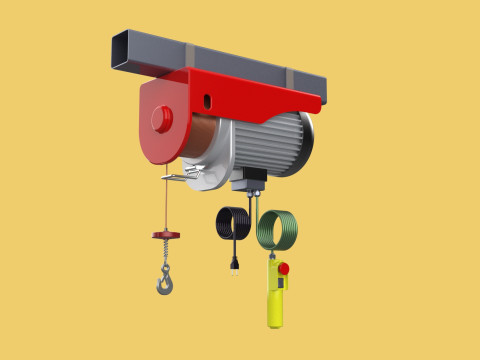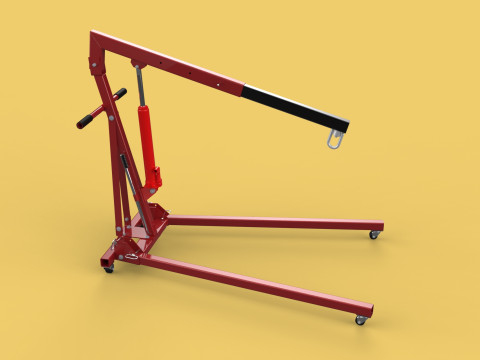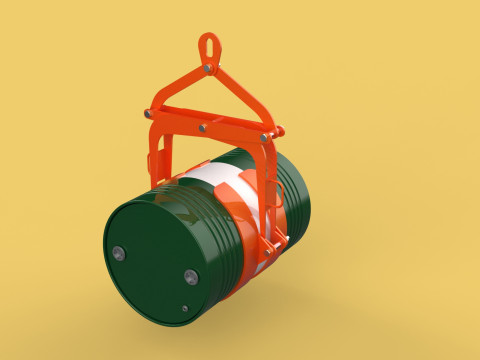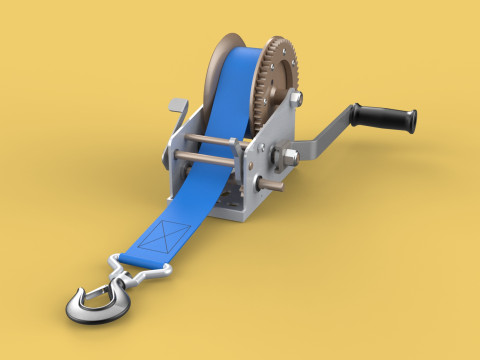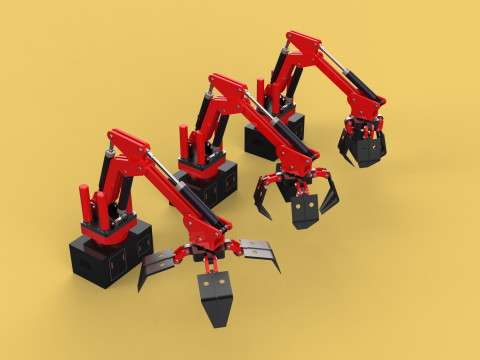JACK ENGINE CRANE HOIST LIFTING LEVELER BALANCER STABILIZER LOAD 3D Model
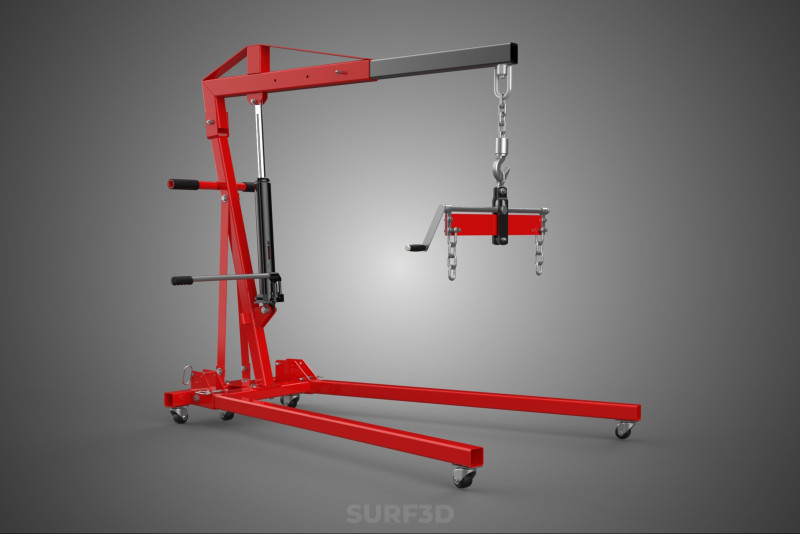
- Mogelijke formaten: 3dm: 3dm 20.76 MB3ds: 3ds 2.70 MBblend: blend 7.20 MBdae: dae 7.72 MBdwg: dwg 7.06 MBfbx: fbx 9.63 MBglb: glb 3.68 MBiges: iges 3.52 MBmax: max 16.87 MBobj: obj 5.22 MBsat: sat 9.04 MBskp: skp 7.28 MBstep: step 4.74 MBstl: stl 5.81 MB
- Polygonen:392193
- Hoekpunten:309963
- Geanimeerd:No
- Texturen:No
- Gemanipuleerd:No
- Materialen:
- Low-poly:No
- Collectie:No
- UVW-toewijzing:No
- Plugins Gebruikt:No
- Afdruk Gereed:No
- 3D-scan:No
- Volwassen:No
- PBR:No
- AI-training:No
- Geometrie:Poly NURBS
- Onverpakte UV's:Unknown
- Aantal keer bekeken:346
- Datum: 2025-06-04
- Item ID:577531
- Rating:
High-quality 3D assets at affordable prices — trusted by designers, engineers, and creators worldwide. Made with care to be versatile, accessible, and ready for your pipeline.
Included File Formats
This model is provided in 14 widely supported formats, ensuring maximum compatibility:
• - FBX (.fbx) – Standard format for most 3D software and pipelines
• - OBJ + MTL (.obj, .mtl) – Wavefront format, widely used and compatible
• - STL (.stl) – Exported mesh geometry; may be suitable for 3D printing with adjustments
• - STEP (.step, .stp) – CAD format using NURBS surfaces
• - IGES (.iges, .igs) – Common format for CAD/CAM and engineering workflows (NURBS)
• - SAT (.sat) – ACIS solid model format (NURBS)
• - DAE (.dae) – Collada format for 3D applications and animations
• - glTF (.glb) – Modern, lightweight format for web, AR, and real-time engines
• - 3DS (.3ds) – Legacy format with broad software support
• - 3ds Max (.max) – Provided for 3ds Max users
• - Blender (.blend) – Provided for Blender users
• - SketchUp (.skp) – Compatible with all SketchUp versions
• - AutoCAD (.dwg) – Suitable for technical and architectural workflows
• - Rhino (.3dm) – Provided for Rhino users
Model Info
• - All files are checked and tested for integrity and correct content
• - Geometry uses real-world scale; model resolution varies depending on the product (high or low poly)
• - Scene setup and mesh structure may vary depending on model complexity
• - Rendered using Luxion KeyShot
• - Affordable price with professional detailing
Buy with confidence. Quality and compatibility guaranteed.
If you have any questions about the file formats, feel free to send us a message — we're happy to assist you!
Sincerely,
SURF3D
Trusted source for professional and affordable 3D models.
More Information About 3D Model :
**Engine Lifting Leveler (Balancer/Stabilizer)**
An Engine Lifting Leveler, also commonly referred to as an Engine Balancer, Load Leveler, or Lifting Stabilizer, is a specialized accessory designed for use in conjunction with an engine crane or hoist. Its primary function is to provide precise control over the tilt and balance of a heavy, irregularly shaped load, most notably an internal combustion engine, during the processes of removal, installation, or positioning. While the term "Jack Engine Crane Hoist Lifting Leveler Balancer Stabilizer Load" is a highly descriptive concatenation of its components and functions, the core device enabling the fine-tuning of the load's angle is the "Leveler," which acts as a "Balancer" and "Stabilizer" for the "Load" when used with an "Engine Crane" or "Hoist" utilizing a "Jack" mechanism (typically hydraulic).
**Purpose and Function:**
Engines are heavy mechanical assemblies with an uneven distribution of weight. Lifting an engine from a single point using a standard hook on a crane often results in the engine hanging at an aw*ward or unpredictable angle. This lack of control makes it extremely difficult and potentially hazardous to maneuver the engine into or out of the confined space of an engine bay, align it with transmission mounting points, or position it onto an engine stand.
The Engine Lifting Leveler addresses this challenge by providing multiple adjustable attachment points for the load. By altering the relative height of these points, the operator can deliberately tilt the engine forward, backward, or sideways. This allows for:
1. **Accurate Positioning:** Enabling the engine to be angled precisely to clear obstructions within the vehicle's chassis or align correctly during installation.
2. **Maintaining Balance:** Counteracting the inherent imbalance of the engine, preventing uncontrolled swinging or tipping.
3. **Enhanced Safety:** Reducing the risk of damage to the engine, vehicle components, or injury to personnel by providing stable, controlled movement.
4. **Improved Efficiency:** Facilitating smoother and quicker engine removal and installation procedures.
**Mechanism:**
A typical Engine Lifting Leveler consists of a robust steel frame or bar with a central connection point for the crane hook. Extending horizontally from this central point are mechanisms providing multiple load attachment points (often four). The key feature is the ability to independently adjust the vertical position of these load attachment points relative to the frame.
Common adjustment mechanisms include:
* **Screw-Type Adjustment:** Utilizes one or more lead screws connected to crank handles or knobs. Turning these handles raises or lowers the connection points via threaded blocks or nuts. By turning different screws by varying amounts, the tilt is controlled.
* **Hydraulic Adjustment:** Employs small hydraulic cylinders or actuators to raise and lower the attachment points. A hydraulic pump (often manually operated) allows for fine adjustments.
The load (engine) is attached to the leveler's points using heavy-duty chains, straps, or cables connected to designated lifting eyes or secure points on the engine block or cylinder head.
**Components:**
Key components typically include:
* **Main Frame/Body:** The structural steel component connecting to the crane hook.
* **Crane Attachment Point:** A shackle or ring on the frame for securing to the crane's hook.
* **Adjustable Mechanism:** Lead screws, hydraulic cylinders, or other systems facilitating height adjustment.
* **Adjustment Controls:** Handles, knobs, or levers used to operate the adjustment mechanism.
* **Load Attachment Points:** Shackles, hooks, or plates on the adjustable parts where chains or straps are connected to the engine.
* **Load Chains/Straps:** Heavy-duty components used to connect the leveler's attachment points to the engine.
**Applications:**
Engine Lifting Levelers are indispensable tools in various settings where engines or other heavy, aw*ward loads are handled, including:
* Automotive repair workshops and garages
* Vehicle restoration facilities
* Industrial maintenance operations
* Marine engine service
* Educational institutions with automotive programs
They are particularly valuable for tasks such as engine and transmission removal and installation, engine swaps, and the precise placement of other large, heavy components like machinery or large pumps.
**Safety Considerations:**
Proper use of an Engine Lifting Leveler requires adherence to safety guidelines:
* Always ensure the leveler's stated load capacity meets or exceeds the weight of the engine being lifted.
* Verify that the engine is securely attached to the leveler at appropriate lifting points.
* Confirm that the leveler is properly connected to a suitable engine crane or hoist with adequate capacity and stability.
* Perform adjustments slowly and incrementally, observing the engine's movement.
In summary, the Engine Lifting Leveler is a critical accessory for controlling the position and stability of heavy engines during lifting operations, greatly enhancing safety, efficiency, and precision in automotive and industrial environments.
KEYWORDS: Engine Leveler, Load Leveler, Engine Balancer, Lifting Stabilizer, Engine Crane Accessory, Hoist Attachment, Automotive Tool, Garage Equipment, Engine Removal, Engine Installation, Heavy Lifting, Load Control, Tilting Mechanism, Screw Type Leveler, Hydraulic Leveler, Workshop Tool, Vehicle Maintenance, Mechanic Tool, Engine Positioner, Lifting Equipment, Material Handling, Engine Swap, Garage Crane, Shop Crane, Capacity, Chains, Hooks, Adjustable, Precision Lifting, Safety.
Afdruk Gereed: NeeAls u een ander formaat nodig heeft, open dan alstublieft een nieuwe Support Ticket en vraag om een ander formaat. Wij kunnen uw 3D modelen van vorm veranderen naar: .stl, .c4d, .obj, .fbx, .ma/.mb, .3ds, .3dm, .dxf/.dwg, .max. .blend, .skp, .glb. We converteren geen 3D-scènes en formaten zoals .step, .iges, .stp, .sldprt.!


 English
English Español
Español Deutsch
Deutsch 日本語
日本語 Polska
Polska Français
Français 中國
中國 한국의
한국의 Українська
Українська Italiano
Italiano Nederlands
Nederlands Türkçe
Türkçe Português
Português Bahasa Indonesia
Bahasa Indonesia Русский
Русский हिंदी
हिंदी